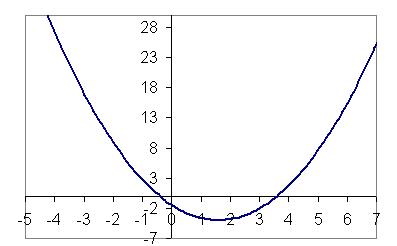Copyright © University of Cambridge. All rights reserved.
'Root Hunter' printed from https://nrich.maths.org/
Show menu
Take a look at the function in the graph below.

The graph is positive for $x = 5$ and negative for $x = 3$. This means that the graph must cut the $x$ axis somewhere between $3$ and $5$.
Although in this case the result is obvious (because we have the whole graph to look at!), we can also use this idea to show that more tricky functions also have roots.
Use this idea to show that these functions possess at least one solution $f(x) = 0$:
$$ f(x)=\frac{1}{x-2}+\frac{1}{x-3} $$ $$f(x)= x^x - 1.5 x$$ $$f(x)= x^{1000000}+{1000000}^x - 17$$ $$f(x)=\cos(\sin(\cos x)) - \sin(\cos(\sin x)) $$
Optional extension activity: Can you make a spreadsheet that helps you find the numerical values of the roots to, say, four decimal places?